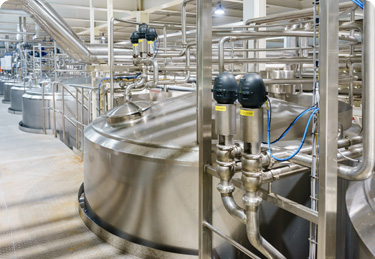Search
Spontaneously combusting hand sanitizer?

It all started with a social media post by Wisconsin’s Western Lakes Fire District [Ref. 1]. The Facebook post featured a photograph of interior damage to a car and warning that hand sanitizer could ignite, if exposed to open flame. The post was shared many thousands of times, and before long the message had morphed into ‘fire started when hand sanitizer in car spontaneously combusted’ [Ref. 2, Ref. 3].
https://www.fox19.com/2020/05/21/police-warn-about-leaving-hand-sanitizer-hot-car
So, let’s take a look at what’s going on here:
- Can a container of hand sanitizer suddenly spontaneously explode if left inside a car in the hot sun?
- Can hand sanitizer explode at all?
- How can hand sanitizer be stored and handled safely?
To understand the issues, we need to learn about Flash Point and Auto-ignition temperature – and be sure we understand the difference between the two!
Firstly, we need to know that hand sanitizers generally contain between 60% and 95% alcohol – either ethanol or isopropanol. A minimum alcohol content is required to be effective as a germicide. But because ethanol and isopropanol are flammable, it means that with these concentrations, the hand sanitizers containing these alcohols are also going to be flammable. They can easily be set on fire.
To understand what is really going on with all this talk of exploding hand sanitizer containers, let’s do a thought experiment. It’s safer than trying things at home!
To the experiment….
Take some hand sanitizer out of the fridge (at say, 4ºC/39ºF) and add a little into a cup. When we introduce an ignition source (a flame, say) briefly, to the cup, nothing much happens. So, let’s now slowly apply heat to the cup. As we do so, the concentration of alcohol vapors above the liquid surface in the cup increase in the air. There comes a point at which an ignition source introduced above the liquid will cause a ‘flash’ – i.e. ignite. The lowest temperature at which the vapors ignite in this way is defined as the Flash Point. For hand sanitizer liquid, this (Flash Point) temperature is likely to be in the region of 15ºC/60ºF to 20ºC/70ºF, depending on the specific hand sanitizer mixture.
If our thought experiment is carefully controlled, then at the Flash Point temperature we would not normally expect a fire to develop after the flash. But we only need to increase the liquid temperature by a few degrees beyond the Flash Point temperature before vapor is released quickly enough from the liquid surface to sustain a full-blown liquid fire after the ‘flash’. The Fire Point is the lowest temperature at which the vapors keep burning after the ignition source is removed. In practice, process safety professionals usually concern themselves with Flash Point rather than Fire Point since the former is easier to measure and normally on the safer side.
Good fun so far, but let’s keep on heating the cup of hand sanitizer and see what happens next. The hotter the liquid gets, the greater the rate of vapor generation. If we introduce our ignition source, we will most likely still get a fire although depending on experimental conditions we may even reach a point where the concentration of vapor is too high to support any combustion close to the liquid; i.e. there is not enough air any more. In practice at these temperatures, the flammable concentrations of vapor-air are likely to be found at a greater distance from the liquid surface. Close in, the vapor-air concentrations are going to be too rich to ignite.
But hold on. Something else happens as we get hotter and hotter. Seemingly out of nowhere we suddenly get an ignition of the vapor-air mixtures – and without introducing any external ignition source. At this point, the vapor above the liquid has self-ignited (auto-ignited). The Auto-ignition Temperature is the temperature at which spontaneous ignition occurs. For hand sanitizer this (auto-ignition) temperature is likely to be in the region of 350ºC/660ºF to 400 ºC/750ºF, say, depending on the specific hand sanitizer mixture.
Discussion
The picture is now becoming clearer. Hand sanitizer in a hot car is really not going to self-ignite as the morphed message from Wisconsin’s Western Lakes Fire District eventually suggested. Direct sun beaming into a car is not going to cause inside car temperatures to rise anywhere near 100ºC/210ºF, let alone the 400ºC/750ºF needed for autoignition. Actually, the plastic interior of the car will melt first! Polypropylene typically melts at 160ºC/320ºF, for example. I don’t know anyone who has returned to their car on a hot day to find their car interior melted! In other words, the temperatures likely to be caused by solar heating inside a car are well below the self-ignition temperature (autoignition temperature) of hand sanitizer. They are, however, above the Flash Point of the hand sanitizer mixture.
The autoignition of hand sanitizer containers in cars is not an accident waiting to happen. Importantly, though, ignition of hand sanitizer vapor IS POSSIBLE if there is an ignition source present. Perhaps smoking could cause ignition of a spill/vapor release – or even a discharge of static electricity. We must remember that hand sanitizer is a flammable liquid at ambient temperatures. It can be ignited in the presence of an ignition source. There is also going to be more flammable vapors released from hand sanitizer when hot. So even if the hand sanitizer will not spontaneously ignite, it’s not a good idea to keep it in a hot environment.
There is also the possibility of container over-pressurization (due to increased vapor pressure) of the hand sanitizer container if sealed and heated, but it seems less likely that this over-pressurization could lead to direct (flameless) explosion of the container. More likely is that vapor pressure build-up would be released once the container is opened.
Learnings
I guess the most important learning from this article for some readers will be improved understanding of the commonly used terms of Flash Point, Auto Ignition Temperature and Fire Point. We can also learn that autoignition of hand sanitizer is not going to happen at temperatures in which we humans can survive. We also must appreciate, of course, that alcohol-based hand sanitizers are flammable and can be easily ignited by many sources of ignition; so there are still dangers if open flames or other sources of ignition are brought to hand sanitizer vapors; and there will be more vapors released from hot hand sanitizer than cold hand sanitizer – so best not to store in a hot environment.
Finally, perhaps we can also learn that the best intentions of safety professionals to spread a word of safety can sometimes go wrong and lead to misrepresentation and misunderstandings. Western Lakes Fire District deleted it’s original post and wrote a new one to clear up the confusion!
And finally:
It turned out that the photograph of interior car damage was not quite what it seemed. Wisconsin’s Western Lakes Fire District posted as follows: “While we never made the claim that the photo utilized was from our district or from an exploding container of hand sanitizer, it has become clear that inference and speculation made it seem as though it was.”
Ref. 1: NFPA Journal, July-August 2020
Ref. 2: https://www.cbsnews.com/news/hand-sanitizer-hot-vehicles-explode/
Ref. 3: https://abc7.com/hand-sanitizer-can-explode-in-cars-hot-exploding/6207515/

Get in touch
To learn more about our expertise and services in dust explosion prevention & mitigation, call us at +1 609 455 0001 or email us at [email protected] today.
We also offer tailored virtual and in-company process safety training programs on Dust Explosions, Static Electricity and HAC (Hazardous Area Classification) and more. Find further information here.









